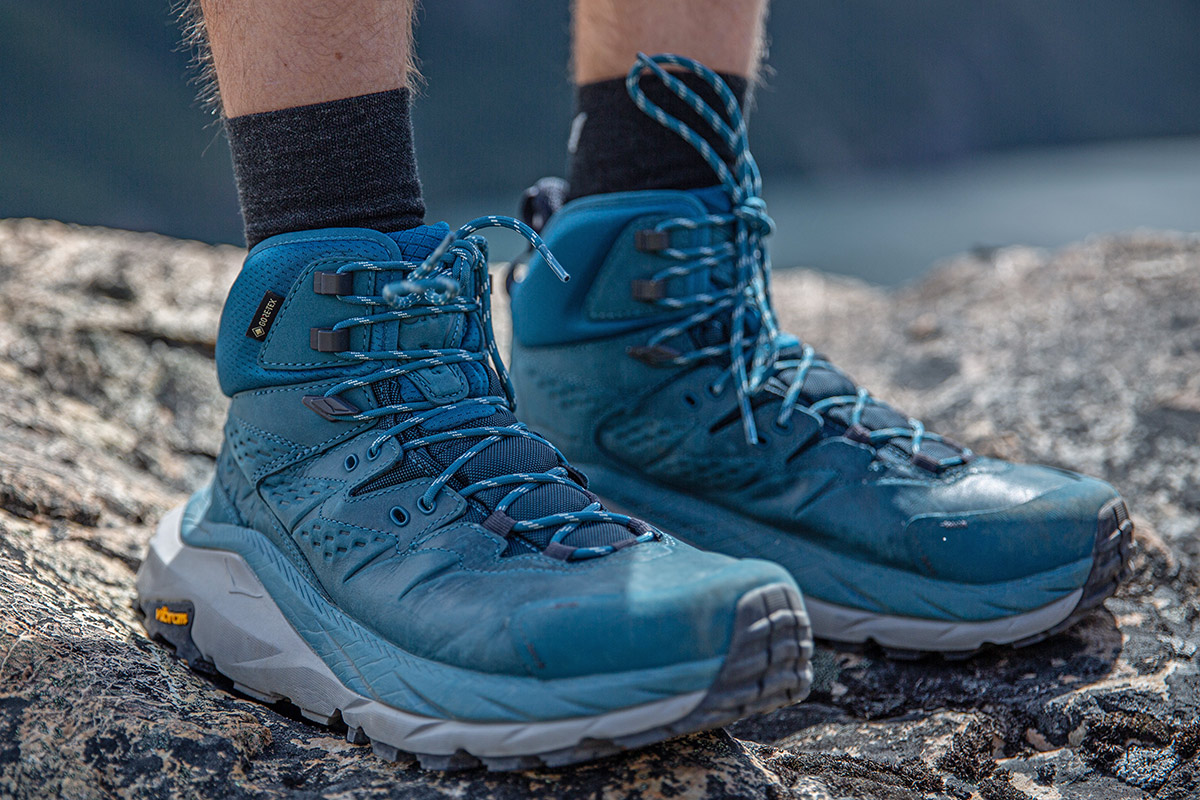

Price: $240
Weight: 2 lbs. 4.6 oz. (men’s size 9)
Waterproof: Yes (GTX)
What we like: Backpacking-ready with a protective and durable leather construction.
What we don’t: Surprisingly firm underfoot, too-short tongue, and polarizing looks.
See the Men's Hoka Kaha 2 GTX See the Women's Hoka Kaha 2 GTX
Hoka, best known for their max-cushioned running shoes, has made significant inroads into the hiking footwear market, and the top of their current hiking line is the Kaha 2 GTX. At $240, it’s the priciest and most boot-like in their collection, with over-the-ankle coverage, Gore-Tex waterproofing, a leather upper, and Vibram tread underfoot. We’ve had largely positive experiences with Hoka footwear over the years, but the Kaha 2 underwhelmed on a challenging backpacking trip in Southern Patagonia. The surprisingly firm base lacked the Hoka squish that has made the brand a favorite, the boot’s wide heel and oddly short tongue led to comfort issues, and we found its oversized footprint hard to trust in technical terrain. Below we fully break down our experience with the Kaha 2. To see how it stacks up against other options, see our article on the best hiking boots.
I came into this test of the Hoka Kaha 2 GTX expecting a similar experience as my time with the brand’s mid-range Anacapa. That boot features Hoka’s signature soft midsole, and while the looks are polarizing and the wide base is a bit clunky, the tradeoff in comfort was abundantly clear. In contrast, however, the Kaha 2 felt like a completely different animal. Despite having a thick midsole, the dual-density foam is quite firm and far from the plush feel you get with the Anacapa and the brand’s popular trail runner, the Speedgoat. Additionally, I found the boot fit large (more on this below), and the wide heel led to issues with rubbing. And to top it off, cinching the laces tight at the top revealed another weakness: an overly short tongue. This meant there was less cushioning and protection from the laces at the top hook, which resulted in significant discomfort around my ankles that never dissipated during the three-day trek.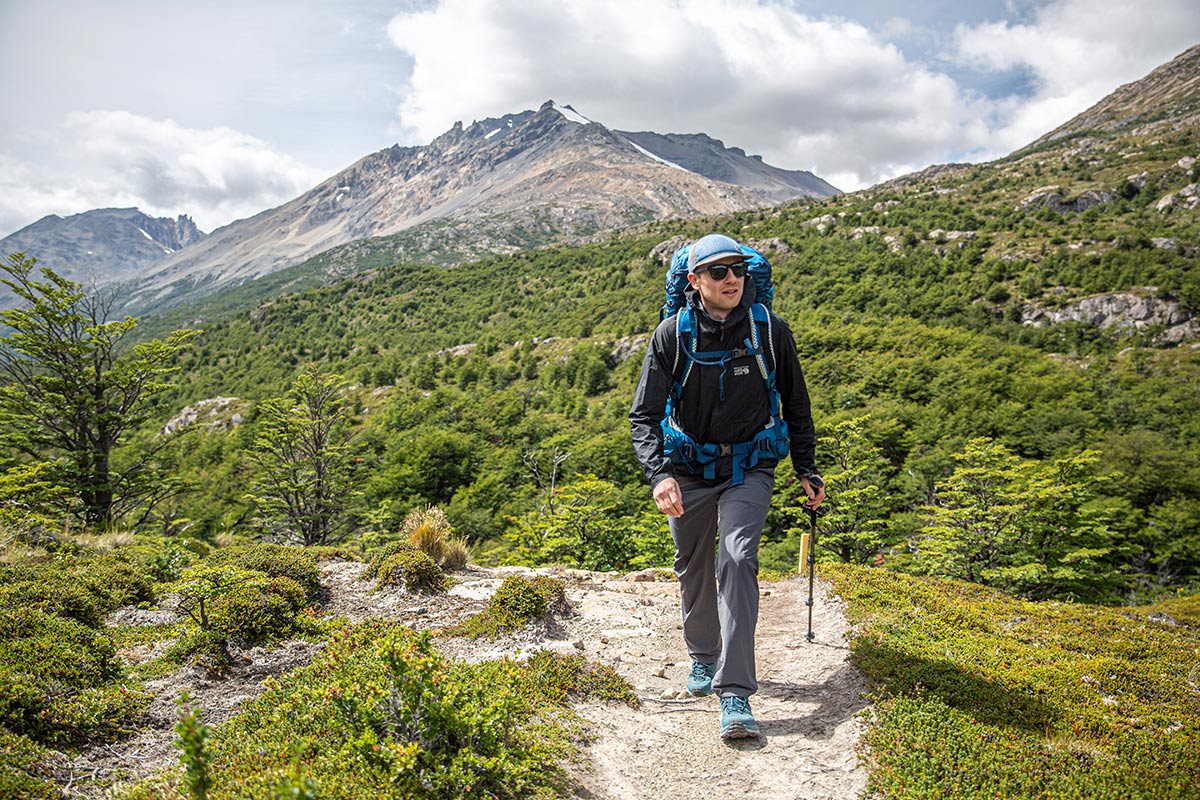
In fairness to the Kaha, sizing down would have helped resolve—or at least alleviate—some of the issues mentioned above. And in terms of positives, the firm base helped protect my feet from sharp rocks and limited fatigue when carrying a full pack. Additionally, the Hoka Kaha 2 GTX is reasonably lightweight and its rockered sole and moderate flexibility gave it some energy when moving quickly on the trail. Finally, there are some nice touches, including the cushioned heel and large strap, which I found made it very easy to slide the boot on. For me, the negatives outweigh the positives overall, but if you can get a good fit, the Kaha is a capable and feature-rich backpacking option.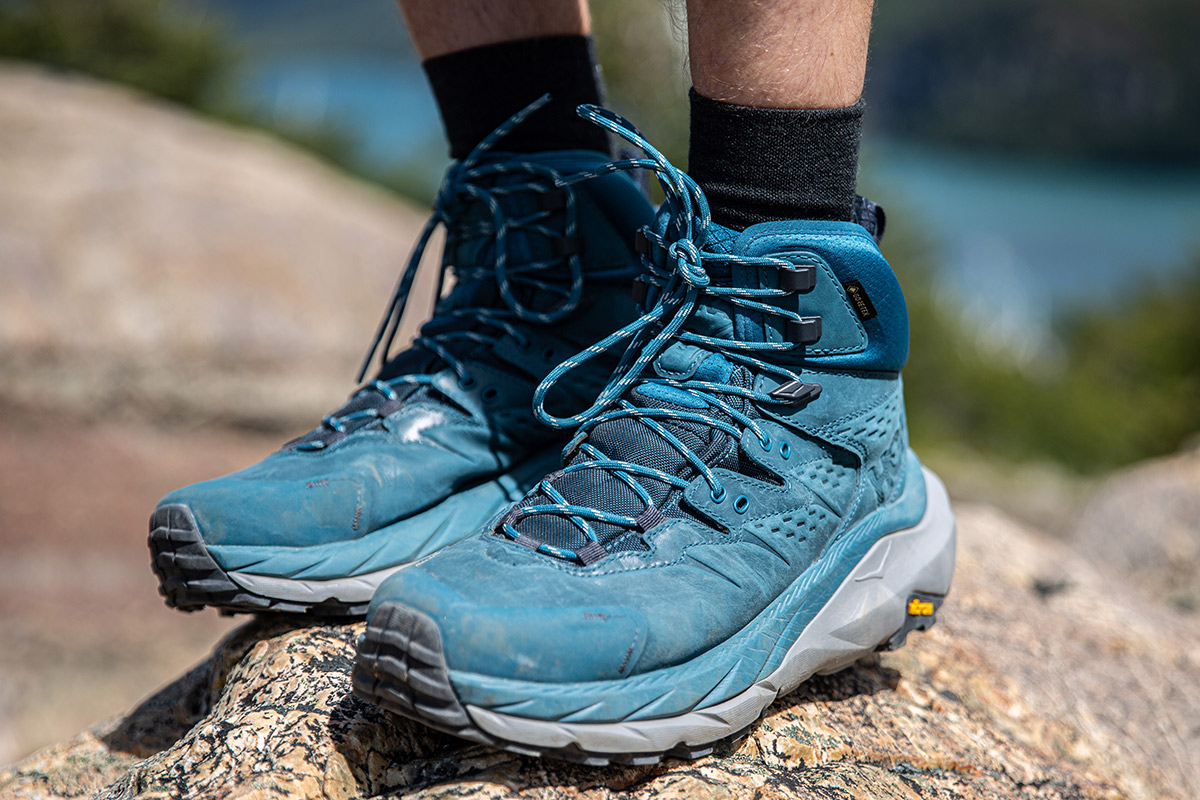
At 2 pounds 4.6 ounces for my men’s size 9 (listed weight is 2 lbs. 1.6 oz.), the Hoka Kaha 2 GTX is reasonably light for the level of protection and stability it provides. The boot’s over-the-ankle height, $240 MSRP, and tough leather build put it in the midweight category that includes best sellers like the Lowa Renegade (2 lbs. 7 oz.) and Salomon Quest 4 (2 lbs. 14.2 oz.). In use, we’ve found the Lowa and Salomon to be slightly sturdier and more capable in mountainous terrain, but the Hoka undercuts them in weight. Going lighter with a boot like Hoka’s own Anacapa Mid (2 lbs.) or Altra’s Lone Peak ALL-WTHR 2 (1 lb. 14 oz.) gets you a more trail runner-like feel but at the sacrifice of protection and stiffness.
For the outsole, Hoka turned to Vibram and their sticky and well-loved Megagrip compound. The tacky rubber gripped reliably on rock, and the 5-millimeter lugs are aggressive enough to bite into softer ground. In general, it’s a well-balanced design, although the boot’s oversized base and patches of blown rubber (the same material used on road running shoes) means it’s most comfortable on established trails rather than scrambling or covering more technical terrain. When rock hopping, crossing creeks, and hiking over loose ground, I found it harder to trust my footing because the extended heel and extra-wide footprint were much larger than I’m used to. It might be something that you adapt to over time, but I think a more precise and trimmed-down design (like La Sportiva’s Ultra Raptor II Mid) is best for challenging terrain and off-trail use. For standard day hikes and backpacking trips, however, the Hoka offers plenty of grip.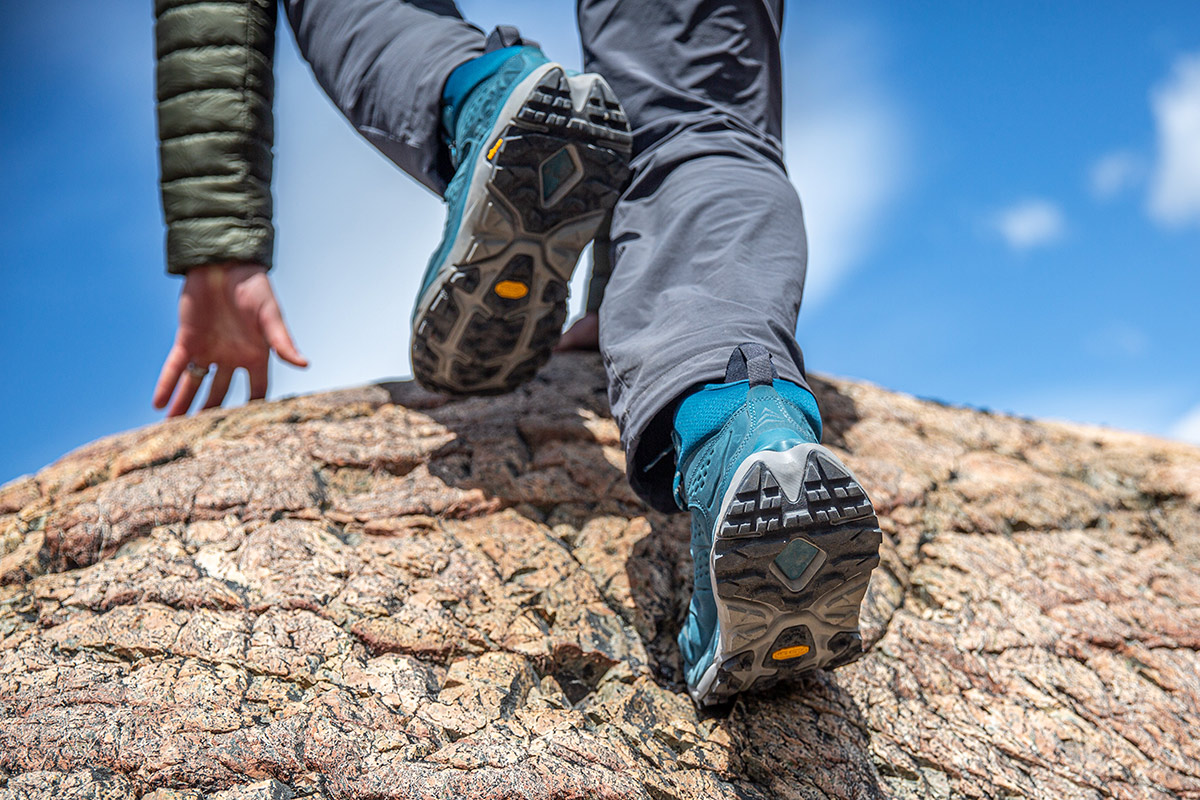
Like traction above, I had mixed feelings about the Kaha 2 GTX’s stability. On one hand, the boot’s over-the-ankle height, reinforced heel, and secure lacing system—which features three sets of locking hooks—make it fully backpacking ready. I was hauling a load of 30 to 35 pounds on our multi-day trip and felt the boot offered a solid base with enough lateral stability to limit ankle rolls and excess flexing on the established sections of trail. However, we spent extensive time on animal trails, crossing creeks, and scrambling up and down steep and loose slopes—all situations where I found it hard to trust my footing with the Kaha. The large footprint was to blame here, and I caught my heel and instep a number of times on rocks that I didn’t anticipate landing on. Again, this is partially personal preference, but the extended shape of the boot—particularly around the heel—felt unnatural to me.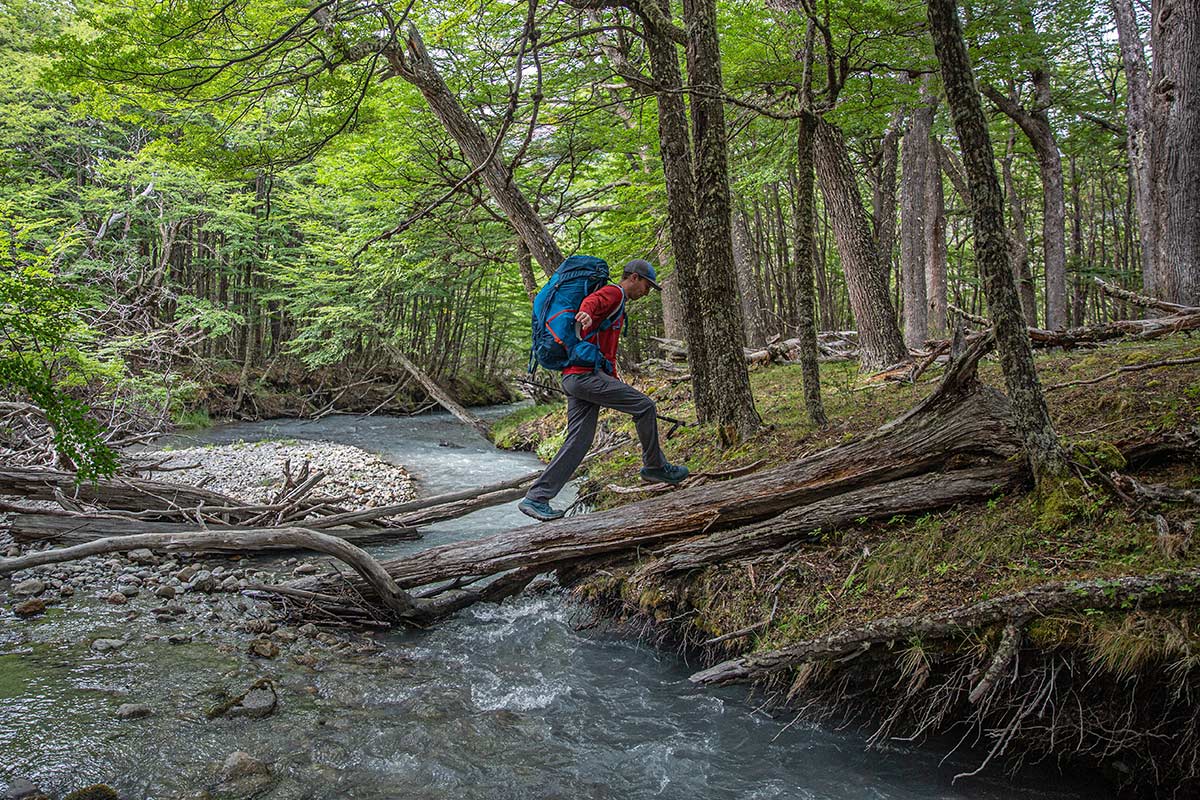
As expected at this price point, the Hoka Kaha 2 features a Gore-Tex waterproof liner for protection. Combining that with a durable water repellent (DWR) coating and sturdy leather upper, the boot did a great job keeping water out during numerous creek crossings on the backpacking trip. Extended exposure to water did result in the leather starting to absorb some moisture, but it never led to leaking. As with all waterproof footwear, you’ll want to be mindful of how high the protection extends—in the case of the Kaha, the tongue separates from the boot’s upper at about the base of the ankle. In water deeper than that point, you risk moisture seeping through. But purely from a waterproofing perspective, the Kaha performed as expected.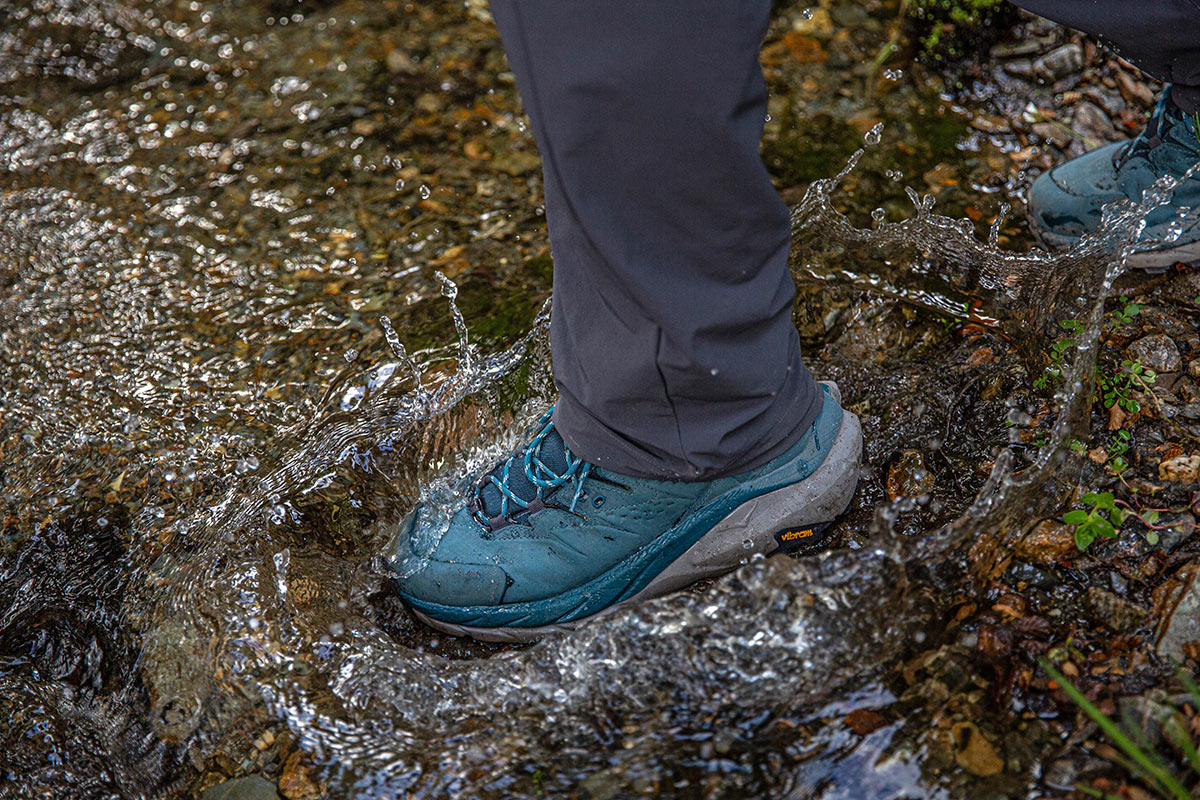
Also as expected, the Kaha’s waterproof liner and relatively thick upper material had a negative impact on breathability. In Austral summertime temperatures that reached as high as the low 60s, I found my feet getting pretty warm and sweaty. This is normal for me with waterproof footwear—even when wearing relatively thin and breathable socks—so it’s not a downside specific to the Kaha 2 GTX. I would, however, love to see them offer a non-waterproof version, which would both ventilate better and dry out faster should you accidentally soak the inside during a water crossing.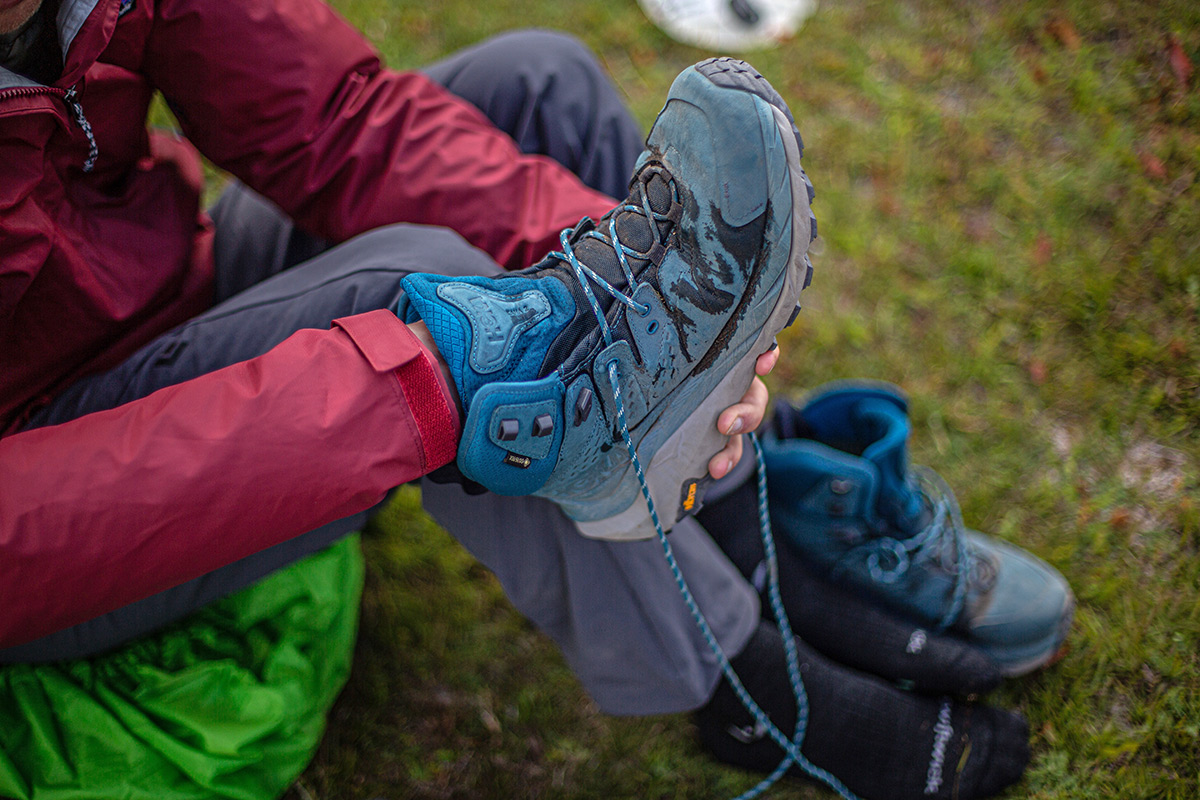
The Kaha 2 GTX is Hoka’s top-end hiking boot, and the material quality certainly matches its $240 price tag. The leather on the upper is from a certified gold-rated tannery and feels appropriately premium. And they’ve outfitted it with quality parts like Vibram Megagrip rubber, a Gore-Tex liner, and soft cushioning on the collar and tongue. Further, there’s plenty of foot protection with a solid toe cap and reinforced heel. My fit and comfort complaints notwithstanding, it’s very obviously a quality product that’s backcountry ready.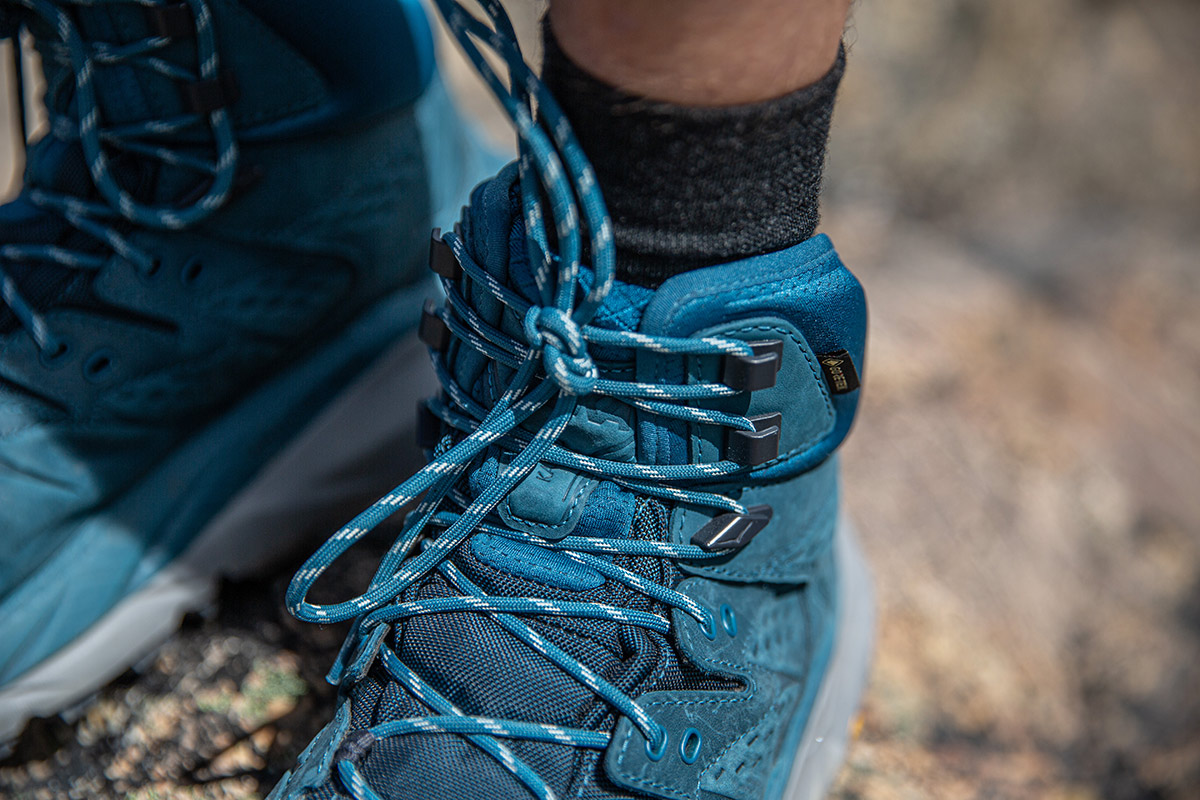
I didn’t have an opportunity to try on the Kaha 2 boots before leaving on our Patagonia trip, but I’ve consistently been a men’s size 9 in Hoka footwear and went with my usual. In this case, however, the boot ran large, and I would’ve been better off going down at least a half size. Lengthwise, it ran long, and combined with a wider-than-usual heel, it felt like I was swimming in the boots unless I pulled the laces extra tight (which exacerbated the comfort issues I covered above). The midfoot and toe box were an average width for me, but in general the fit felt more polarizing than Hoka’s other models (including the latest Anacapa hiking boot and Speedgoat trail runner).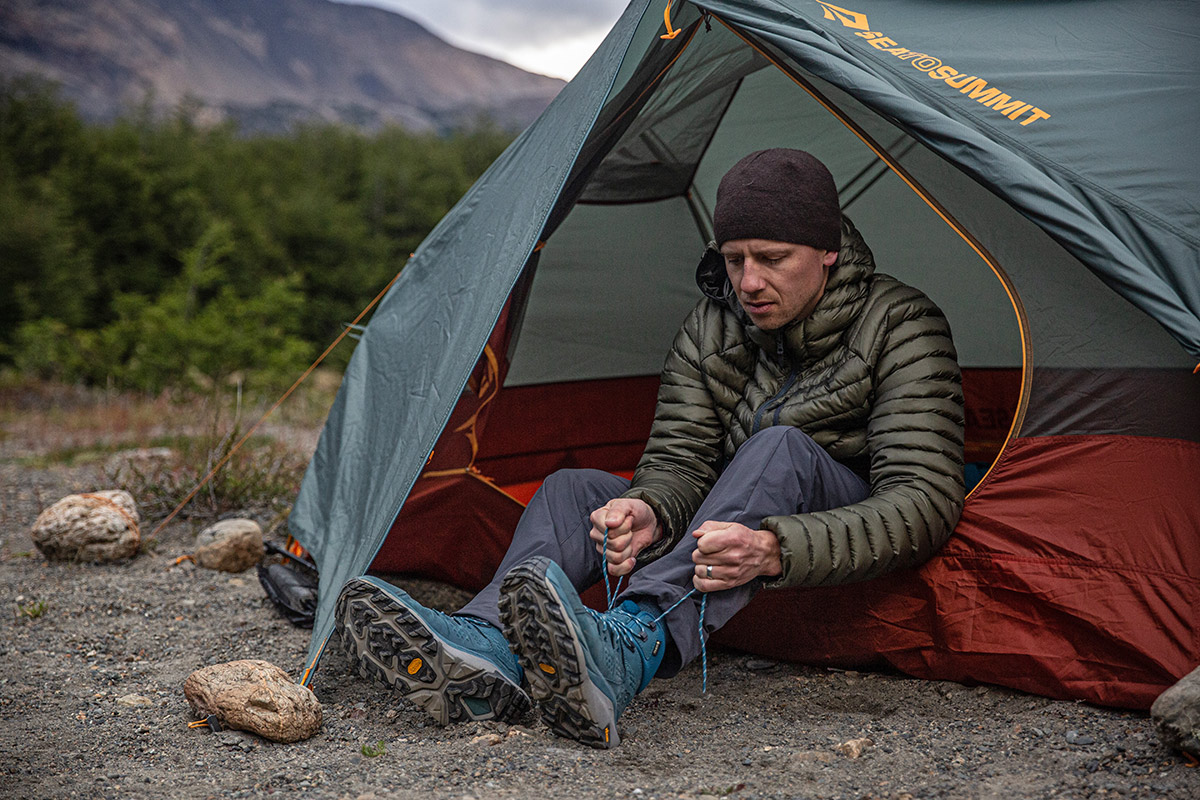
Hoka, like many footwear companies today, is looking at how they can reduce their environmental impact. Their parent company, Deckers, is a member of the United Nations Global Compact (UNGC), the world’s largest corporate sustainability initiative, and Hoka specifically has several explicit goals over the next few years for reducing energy use, carbon emissions, and water usage, as well as increasing use of recycled, renewable, regenerated, or natural materials in their footwear. As far as the Kaha 2 GTX right now, that means: The Gore-Tex membrane is made of 45% recycled content, the mesh and laces also feature recycled material, the DWR treatment is free of harmful perfluorinated compounds, and the molded PU sockliner is 50% made from soybean oil instead of crude oil.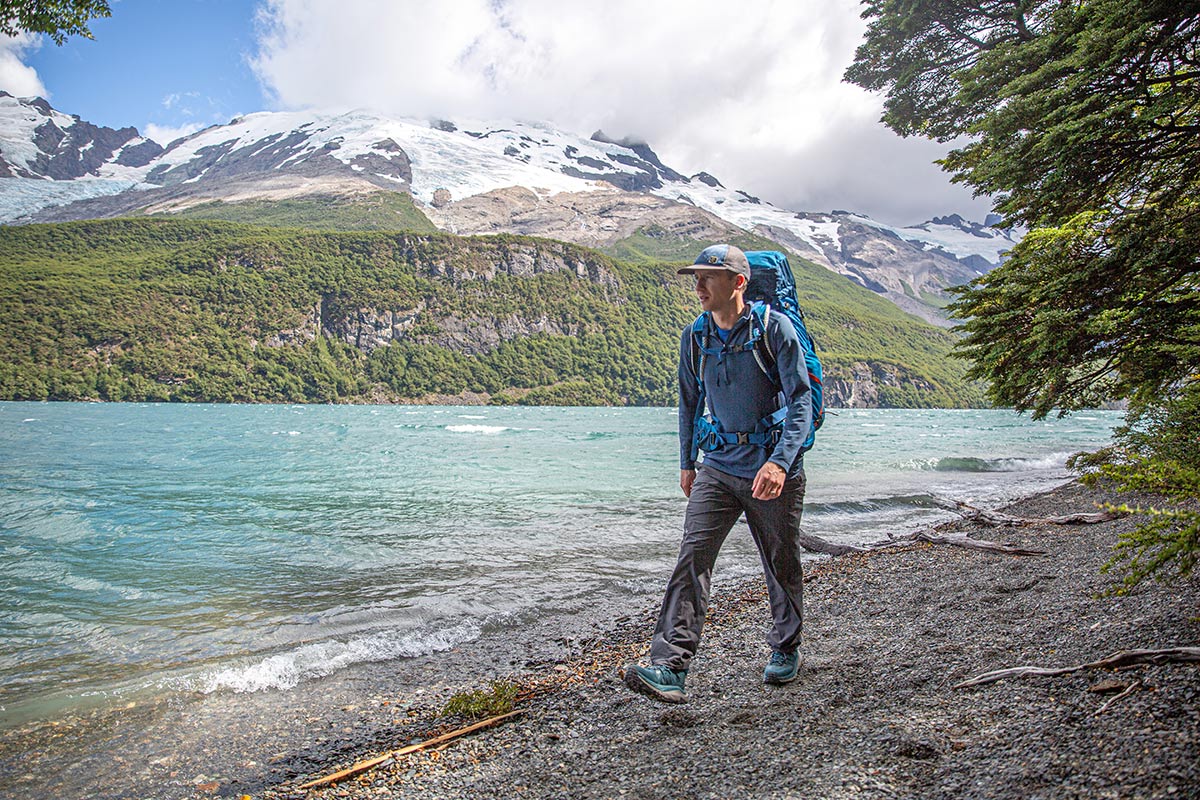
I took the men’s version of the Hoka Kaha 2 GTX out for testing in Patagonia, and Hoka makes an almost identical women’s version of the boot, as well as a $220 low-top option for both men and women (2 lb. 1.6 oz. and 1 lb. 11.6 oz., respectively). Hoka makes both boot and low-top options (also $240 and $220) in a monochromatic all-gender version, sized from men’s 3.5 or women’s 5 up to men’s 14 or women’s 15.5. At this point, none of the models comes in a non-waterproof version.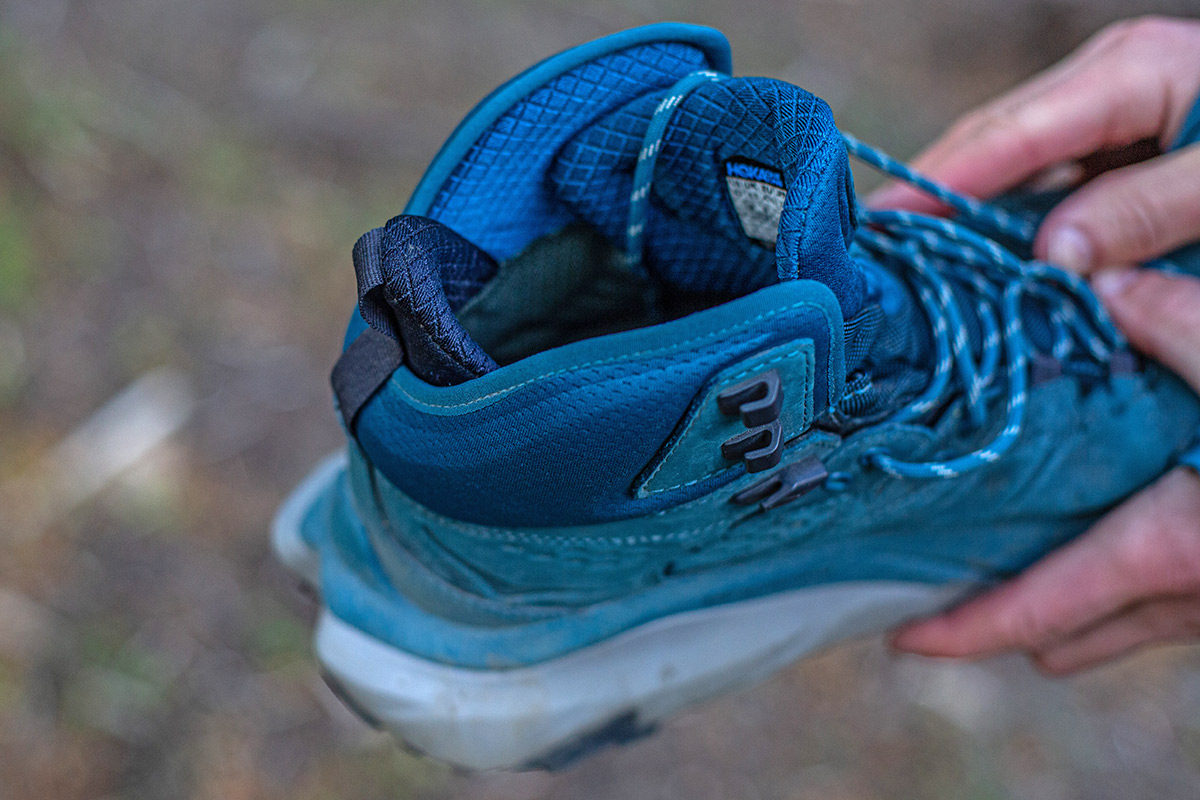
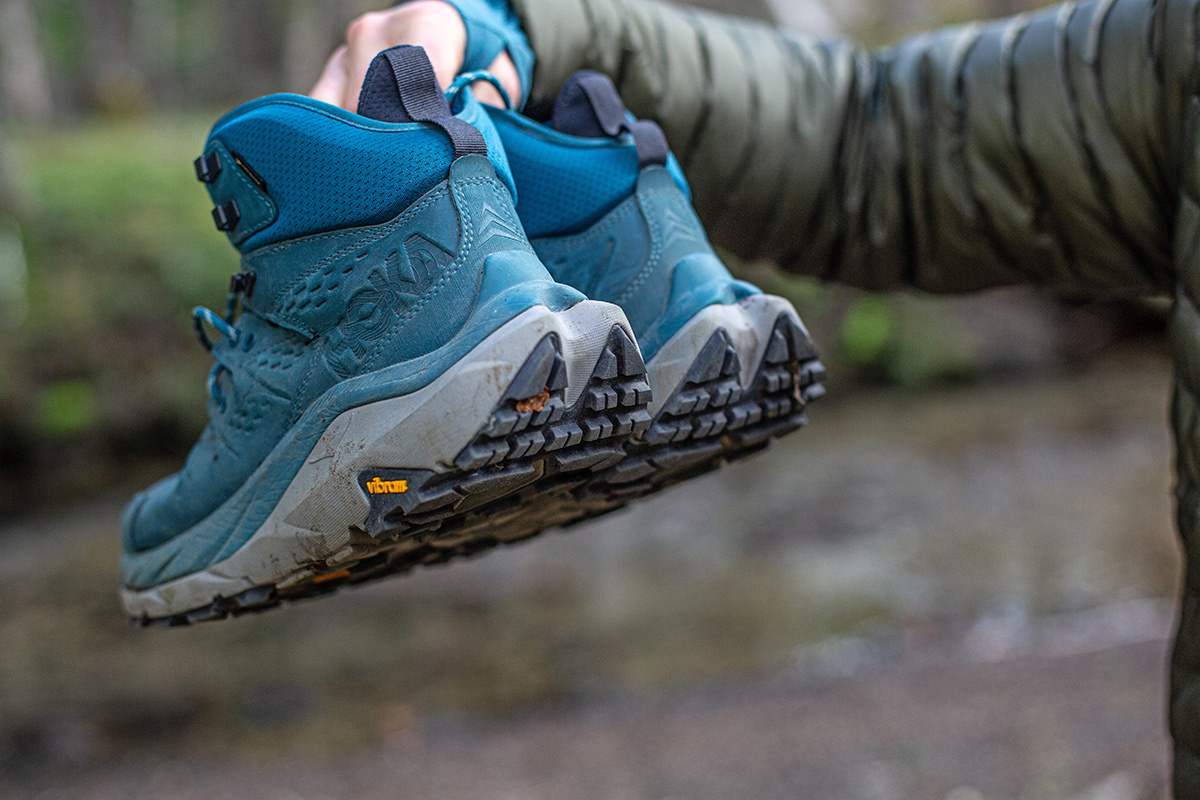
| Boot | Price | Category | Weight | Waterproof | Upper |
|---|---|---|---|---|---|
| Hoka Kaha 2 GTX | $240 | Lightweight | 2 lbs. 1.6 oz. | Yes (Gore-Tex) | Nubuck leather |
| Hoka Anacapa Mid GTX | $180 | Lightweight | 2 lbs. | Yes (Gore-Tex) | Nubuck leather |
| Lowa Renegade | $265 | Midweight | 2 lbs. 7 oz. | Yes (Gore-Tex) | Nubuck leather |
| Salomon Quest 4 GTX | $230 | Midweight | 2 lb. 14.2 oz. | Yes (Gore-Tex) | Leather / textile |
| Altra Lone Peak ALL-WTHR 2 | $190 | Lightweight | 1 lb. 14 oz. | Yes (eVent) | Synthetic |
The Kaha 2 joins a crowded field of light yet backpacking-capable hiking boots, and one of its most interesting competitors comes from in-house: the Anacapa Mid GTX. At $185, the Anacapa is supposed to be a step down in performance from the Kaha, but we wound up preferring it in nearly every way. The soft midsole and rockered shape give it fantastic energy on the trail, and the fit and comfort were more in line with what we expect from the brand. It’s true the Kaha has a nicer leather upper, and the heel shape is better executed for slipping the boot on and off (the Anacapa is a bit of a pain by comparison), but otherwise we think the Anacapa is the superior all-around design (for more, see our Anacapa Boot review).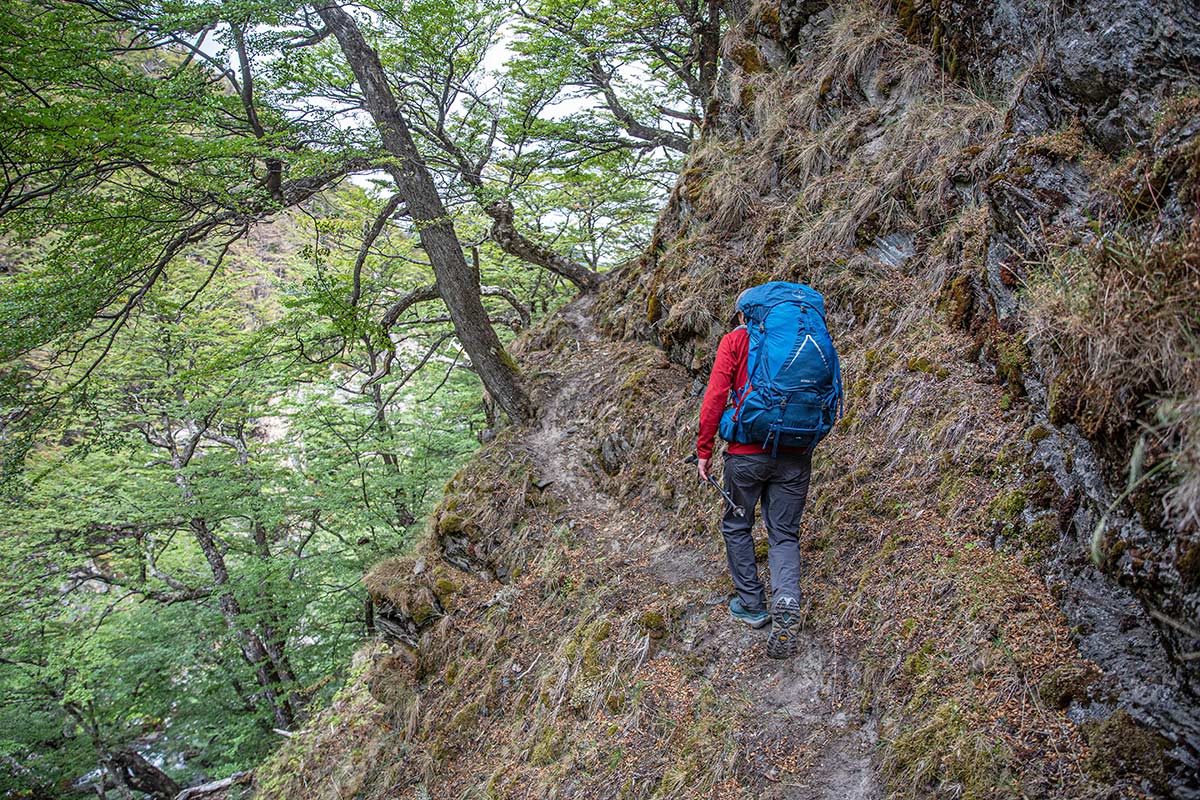
A more traditional boot in the mid-range category to have on your radar is Lowa's Renegade. This classic choice features a leather upper, reliable lacing system, and plenty of stability for hauling a heavy pack. And at 2 pounds 7 ounces, you only pay a small weight penalty compared with the Kaha. It’s true the Renegade isn’t flawless—it’s well-documented that high-mileage users can go through a pair a season—but the design is far less polarizing. Additionally, it’s pretty easy to get a great fit with three widths offered (narrow, regular, and wide). For only $15 more, we give the Lowa Renegade the clear advantage.
Another extremely popular backpacking choice is Salomon’s Quest 4. This boot has been our top choice for “rough terrain” for a number of years thanks to its excellent mix of toughness, support, and comfort. In addition, it has a standout lacing system with locking eyelets at the base of the ankle that really secure your feet in place. Weight is about the only downside when comparing the Salomon to the Kaha (my Quest 4 is 2 lbs. 11.2 oz.), and there’s a noticeable difference when wearing them back-to-back. But if you want a quality, supportive boot for backpacking, we think it’s the best option currently out there.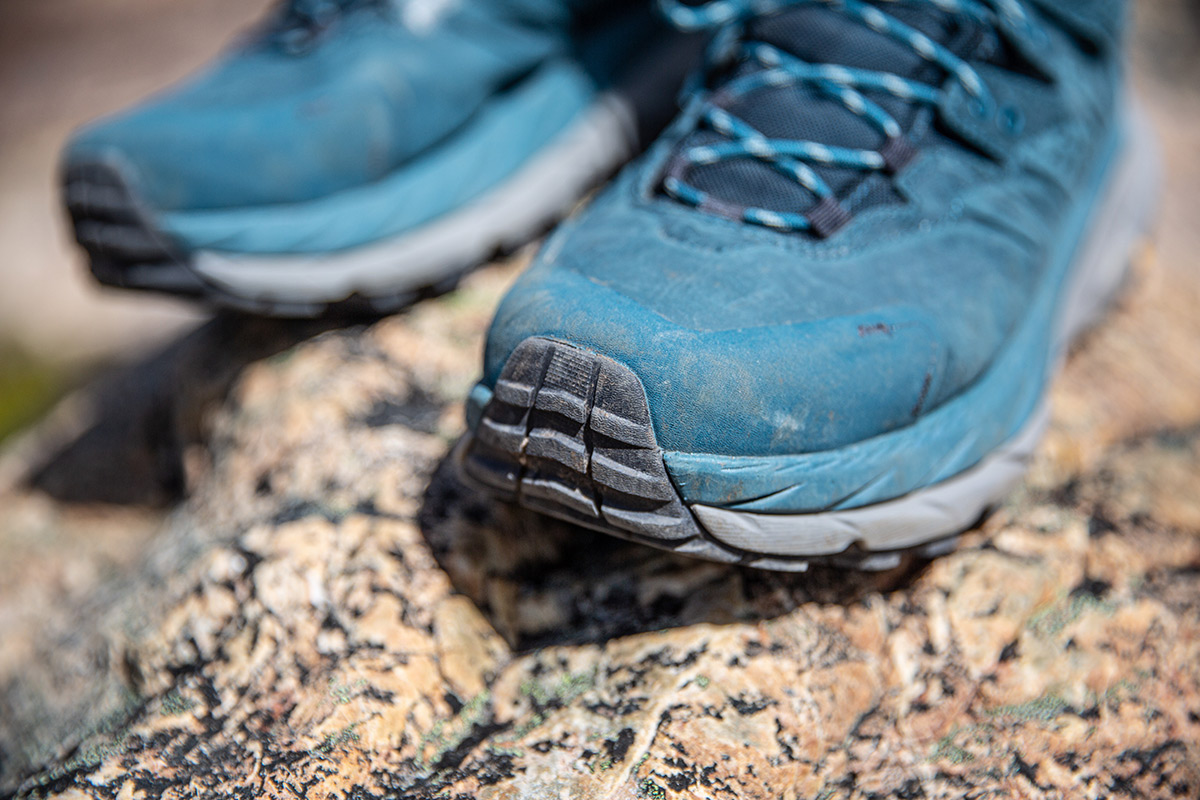
A final option to consider lands on the other end of the weight spectrum: Altra’s Lone Peak ALL-WTHR Mid 2. This over-the-ankle waterproof boot is based on the popular Lone Peak trail runner and retains a lot of the shoe’s core features: zero-drop shape, light weight (1 lb. 14 oz. for a pair), and a roomy toe box. As a result, it’s a nice match for moving fast and in comfort on well-maintained trails—the fit and feel is nearly slipper-like. But we found the Lone Peak much harder to trust when the going got technical: Even our wide-footed testers felt the toe box was too roomy to feel locked in when covering off-camber and uneven terrain. As a result, the Kaha gets the nod from us for hauling a heavier load (provided you can get a good fit).
If you’re thinking about buying gear that we’ve reviewed on Switchback Travel, you can help support us in the process. Just click on any of the seller links above, and if you make a purchase, we receive a small percentage of the transaction. The cost of the product is the same to you but this helps us continue to test and write about outdoor gear. Thanks and we appreciate your support!
Depending on the seller, most products ship free in the United States on orders of $50 or more. International shipping availability and rates vary by seller. The pricing information on this page is updated hourly but we are not responsible for inaccuracies.